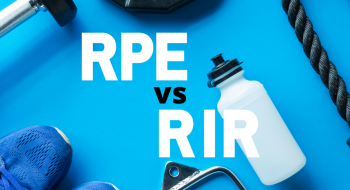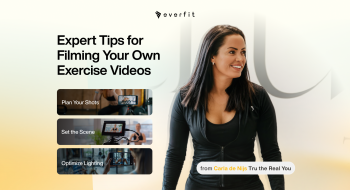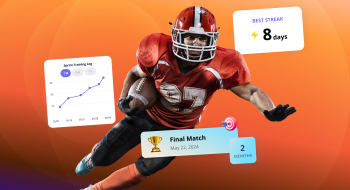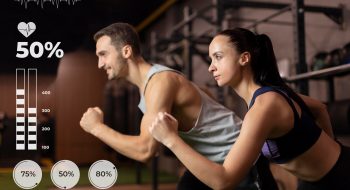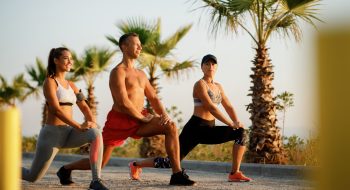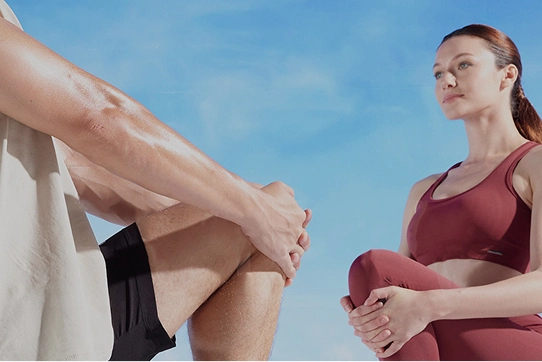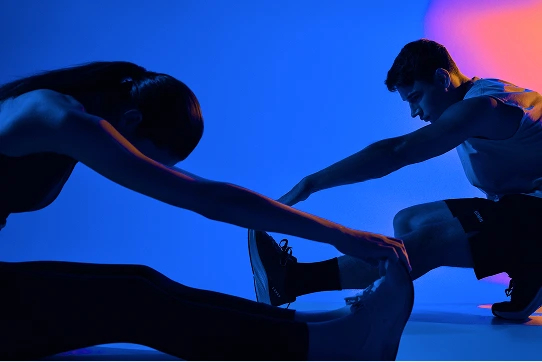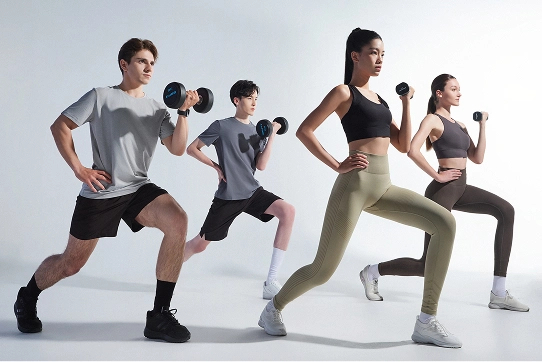Whether your clients are focusing on losing weight or increasing strength, customized workout plans play a key role in their long-term success. This way, you can ensure they work toward their individualized goals each time they hit the gym.
At Everfit, we’re dedicated to simplifying the process of creating customized workout plans for your clients. In this blog, we’ll guide you through maximizing the potential of our powerful Exercise Library, helping you enhance both your productivity and your clients’ training outcomes.
Why Use The Everfit Exercise Library?
The Everfit Exercise Library is a digital database consisting of thousands of different exercises, from stretches to barbell cleans. Coaches and trainers can use the library to build tailored workout routines for each of their clients. Not only can this add greater variety to their workouts, but it also ensures that their routines are keeping them on track to their long-term goals, whether they’re looking to lose weight or gain muscle.
When using the Evervit Exercise Library, clients are provided with visual guides to follow when carrying out each exercise, including videos and text-based instructions. This way, even when you are not accompanying them on the workout, you, the coach can ensure they are perfecting their form and getting the most out of each exercise.
3 Key Enhancements You Need To Know
We’ve recently added 1000 new exercises to the library and already have plans in the works to add more. Again, this makes it easy to add variation to your clients’ workouts while also reducing the amount of custom exercises you might need to add yourself.
However, we also paid close attention to the exercises that weren’t being programmed by coaches and have removed them from the database. This makes it easier to find what you are looking for within the ever-growing library. We’ve also taken onboard customer feedback, adding or improving videos on 500+ exercises, ensuring that they are as clear, informative, and helpful as possible.
Lastly, don’t miss out on the three filters that absolutely make finding what you need in the library quicker and easier. While previously, the library could only be filtered one way, we’ve broken the option into three distinct and commonly used options:
- Exercise Modality
- Muscle Group
- Movement Pattern
Understanding The Filters.
The three filters were designed to make it easier to find exercises within the database and pull together effective workouts for your clients. In order to do this, we’ve selected filters that break down exercises into different categories.
Exercise Modality.
Exercise modality refers to the various types of physical activities and equipment used during workouts in order to elicit a specific physiological response in the body or work toward a specific goal.
Exercise modalities involve a strategic interplay of different energy systems to elicit specific outcomes, such as improved strength and endurance levels and heightened flexibility. When curating a workout using these filters, you can focus on the body’s energy system use during exercise while also choosing between a wide range of activities, including cardio workouts, stretches, and weightlifting.
The modality options and general definitions on Everfit are as follows
Activation
Exercises that aim to engage and prepare specific muscles or muscle groups through targeted exercises to enhance their function and performance are often used in warm-ups and injury prevention.
Agility
Dynamic exercises or drills are designed to improve the ability to move quickly and change direction more rapidly and efficiently. These exercises can involve patterns like cutting, jumping & landing, and use equipment like ladders, cones, or hurdles.
Cardio
Exercises that involve sustained physical activities (long intervals or steady state efforts) that increase heart rate and respiratory rate, promoting cardiovascular health and endurance. This modality includes activities such as running, cycling, and rowing.
Conditioning
Exercises that involve diverse, high-intensity efforts that target overall physical preparedness and performance enhancement. These exercises are distinct from the Cardio modality, which generally focuses on sustained, steady-state activities aimed at cardiovascular endurance. Conditioning exercises focus on short, intense bursts of activity followed by rest, like burpees or mountain climbers.
Mobility
Exercises that focus on enhancing the range of motion in joints and lengthening the muscles. They can include static, dynamic or PNF stretches.
Myofascial Release
Exercises that involve techniques used to relieve muscle tightness and improve soft tissue by applying gentle, sustained pressure on the muscles and fascia. This modality typically uses tools like foam rollers, massage balls, or handheld rollers.
Power
Exercises that focus on performing movements at high velocity to enhance rate-of-force development (the ability to exert maximum force in minimal time). This modality includes activities like jumping, sprinting, Olympic & other explosive lifts as well as explosive bodyweight movements.
Strength
Exercises that focus on increasing muscle mass and enhancing muscular strength through resistance training. This modality includes a variety of activities such as weightlifting, resistance bands, bodyweight exercises, and machine-based exercises.
Yoga
Exercises that involve common yoga poses and movements, which typically focus on improving mobility, stability, breathing techniques, and meditation practices.
How To Search By Modality.
You can assign one option in the exercise profile. Your choice will appear in the exercise library, and the exercise pop-up will appear on your client’s mobile app during their workout.
To find out more about adding an exercise modality, click here.
Muscle Groups.
Filters can also be applied to sort exercises based on the different muscle groups they target. This is a particularly useful filter when building workouts with upper and lower body splits or when you want to build a muscle group-specific finisher, like a core block or an Arm Farm.
You can currently search through exercises using the following muscle groups:
Core
Typically comprised of Abdominals, Obliques, and pelvic floor muscles.
Lower Back Typically comprised of Erector Spinae, Multifidus & QL’s (Quadratus Lumborum)
Biceps
Typically comprised of Biceps Brachii & Brachialis.
Lower Leg
Typically comprised of the calf (Gastrocnemius & Soleus), shin (Anterior Tibialis & Peroneals), and foot (Flexor & Extensor Digitorium & Hallucis Longus) muscles.
Shoulders
Typically comprised of the Deltoids (Anterior, Posterior & Lateral) and Rotator Cuff muscles (Supraspinatus, Infraspinatus, Teres Minor & Subscapularis).
Forearms
Typically comprised of the Anterior (Flexors) & Posterior (Extensors) Compartment muscles.
Glutes
Typically comprised of the Gluteus Maximus, Medius & Minimus.
Hamstrings
Typically comprised of the Biceps Femoris, Semitendinosus & Semimembranosus.
Hips & Groins
Typically comprised of the Adductor group (Adductor Longus, Brevis & Magnus, Gracilis & Pectineus) and the Hip flexors (Psoas Major, Iliacus, Tensor Fasciae Latae, Sartorius, and Piriformis).
Mid Back
Typically comprised of the Lats (Latissimus Dorsi) and Traps (Trapezius).
Chest
Typically comprised of the Pecs (Pectoralis Major & Minor).
Quads
Typically comprised of the Rectus Femoris, Vastus Medialis, Lateralis & Intermedius.
Upper Back & Neck
Typically comprised of the Levator Scapulae and Rhomboid Major & Minor.
Triceps
Typically comprised of the Long, Lateral & Medial head of the triceps
Full Body
A more generalized option for exercises that use a number of major muscle groups throughout the whole body.
Upper Body
A more generalized option for exercises that may use multiple major upper body muscle groups.
Lower Body
A more generalized option for exercises that may use multiple major lower body muscle groups.
How To Search By Muscle Group.
You can choose up to three options for the exercise muscle group. The first selected option will be automatically marked as primary. Clicking the star icon next to any of the three selected options will change the primary option.
The primary muscle group will show up on the exercise library and the client’s exercise pop-up app when tracking a workout.
For a more in-depth tutorial on using the muscle group filters, click here.
Movement Pattern.
As the name suggests, the movement pattern filter categorizes exercises based on the specific body movements they incorporate. This includes:
- Pushing
- Pulling
- Squatting
- Hinging
Again, this makes it easier to develop workouts that help your clients work towards a possible goal or to break down daily workouts into different focuses. This becomes particularly useful when building workouts focused around push/pull split or when you want to add some variation to exercises that utilize the same movement patterns.
Carry / Gait
Exercises focused on loaded movements that involve walking or moving. Examples include farmer’s walks & rucking.
Core Bracing
Exercises focused on preventing flexion, extension, or rotation of the trunk/core. Examples include plank variations & the pall of the press.
Core Flexion / Extension
Exercises focused on flexing and extending through the trunk of the body. Examples include sit-up & crunch variations as well as supermans.
Core Rotation
Exercises focused on twisting and rotating through the trunk of the body. Examples include Russian twists & wood chops.
Locomotion
Exercises that move the entire body in a repetitive fashion such as monster walks, running & skipping.
Lower Body Hinge
Exercises focused on hip-dominant movements that involve bending at the hips while keeping a flat back. Examples include deadlifts and kettlebell swings.
Lower Body Push
Exercises that focus on the flexion and extension of the knee and ankle joints. Examples include squats and calf raises.
Upper Body Horizontal Pull
Exercises focused on pulling movements performed in a horizontal plane, primarily engaging the back muscles and biceps. Examples include bent-over rows and seated cable rows.
Upper Body Horizontal Push
Exercises focused on pushing movements performed in a horizontal plane, targeting the chest, shoulders, and triceps. Examples include bench presses and push-ups.
Upper Body Vertical Pull
Exercises focused on pulling movements directed downward from overhead, targeting the lats and other back muscles. Examples include pull-up & lat pulldown variations.
Upper Body Vertical Push
Exercises focused on pushing movements directed upward, targeting the shoulders, triceps, and upper chest. Examples include overhead presses and handstand push-ups.
How To Search By Movement.
You can also choose up to three options for the Exercise Movement Pattern. Again, the first selected option will be automatically marked as primary, but you can click the “star” icon to change the primary from any of the 3 selected.
Clients will also be able to see the primary movement pattern selected in the exercise pop-up (via their app) when tracking a workout, furthering their understanding of each exercise.
Take a look at how to add an exercise movement pattern here.
Conclusion
With over 1000 new exercises to choose from and three filter options, it’s easier than ever to build customized workout routines on behalf of your clients. Not only does this save you a considerable amount of time and energy, but it also means that you can help each individual client work towards specific, personalized goals. This will help you take your coaching or training business to new heights!
At Everfit, we never stop working to improve our tools and features, which means we’re your business’s best friend when it comes to improving the client experience.






